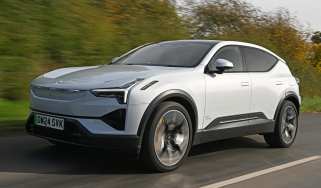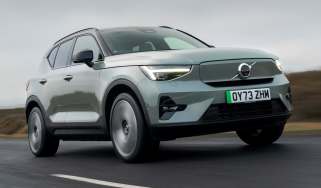How to charge your electric car without a driveway
Here’s how to charge your electric car if you don’t have a private off-street parking space
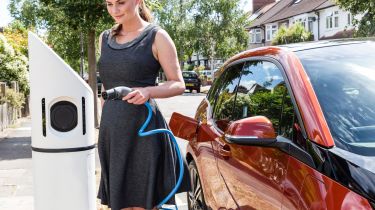
The ability to recharge an electric vehicle at home is one of the key benefits of EV ownership, but what are drivers without a driveway meant to do?
Fortunately, the UK’s public charging infrastructure is rapidly improving, with over 56,000 EV charging points installed across the country at the time of writing. These are distributed between large charging stations and individual chargers, the latter often found on residential streets and ideal for those without a driveway.
Whether you want to charge your car on the street outside your home, or exclusively use the public charging network, it is certainly possible to run an electric car without a driveway, and you could even be eligible for the government's Electric Vehicle Chargepoint Grant. Read on for our advice on how to do both.
Charging on the street outside your home

While it can be trickier to charge an electric car if you don’t have a private off-street parking space, it’s not technically illegal to run a cable across the pavement from your charger to your car, although some local authorities have rules surrounding the practice. This charging method can create a trip-hazard for pedestrians and you may be liable for any injuries that occur.
This risk can be mitigated using a cross-pavement charging solution. Also known as a cable gulley, a cross-pavement charging solution is a channel installed into the pavement outside your home, designed to accommodate an EV charging cable. It sits flush with the pavement, reducing the risk of a pedestrian tripping over the charging cable. Make sure to check with your local council for permission before proceeding down this route.
In March 2024, the UK Government extended its EV Chargepoint Grant to those without a driveway, as long as they also install a cross-pavement charging solution. Originally reserved for those with private off-street parking, this grant can provide EV drivers with up to £350 towards the purchase and installation cost of a wallbox. There are certain requirements that must be met to qualify, so read the Government’s dedicated webpage for more information.
If you do decide to run a cable without a cross-pavement charging solution, you'll need to ensure the cable is long enough to reach without using an extension. Using an extension lead is a fire hazard. It is also wise to place a protective anti-trip cover over the cable where it crosses the pavement.
It’s also not recommended to charge your EV through a traditional three-prong socket in your home as charging is extremely slow – some EVs with bigger batteries will take over 24 hours to fully recharge. Many manufacturers see this is a last-resort method.
Charging on a residential street using a public charger
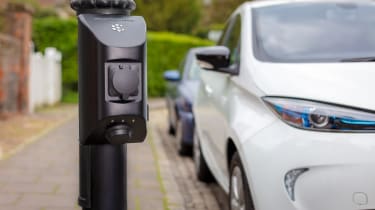
If you don’t have a parking space directly outside your home, you can still charge your EV on a local residential street using a public charging point. Just make sure you have the relevant permit or permission to park your car there while it's charging.
To accelerate the installation of new chargers, The UK Government is rolling out its Local Electric Vehicle Infrastructure (LEVI) funding to local councils, specifically to accelerate the installation of new charging points on residential streets for EV drivers without a driveway. You can find many of these new charge points integrated into lamp posts and bollards.
To use most of these points you will almost always need to bring your own cable, and the charging speeds will vary depending on the power available to the area.
Charging at work and other public places
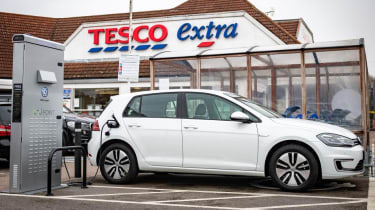
If you don’t have adequate parking outside your home, or your street has no public chargers, you may be able to charge your EV at work, at the supermarket or at another public car park. This is a great way to top-up your EV’s battery while you are busy doing something else for an extended period of time.
The UK Government’s Workplace Charging Scheme exists to promote the installation of charging facilities at the workplace, so it’s definitely worth asking your employer whether they plan to install any chargers.
Another place many people spend a substantial amount of time is the gym. Many of the UK’s gyms now offer charging facilities in their car parks for use while you keep yourself fit, and some may offer this as part of your membership plan, so it’s worth checking what’s included in yours.
Many councils are installing more and more charging points around towns and cities to help increase support for electric vehicles. This solution allows EV owners to top up while they’re parked at a supermarket or public car park, for example – just remember to bring your charging cable.
Charging using a public charging station
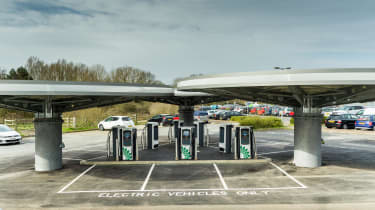
We have, of course, lived through most of motoring history without access to our own personal fuel station on our driveways, so the public charging network should eventually become as widespread as petrol and diesel stations are now.
For the fastest charging speeds, you’ll want to use a public charging station. These usually offer slow, fast and rapid charging, with ultra-rapid charging available in some areas, although the speed at which you can charge also depends on your car. Unlike the individual chargers that can be found dotted around residential streets, charging stations operate much like a traditional fuel station, so you won’t be able to leave your EV parked up overnight to charge.
For more information about charging speeds and types, read our guide to fast and rapid charging...
Recommended

New Subaru Trailseeker revealed as rugged electric SUV with 375bhp
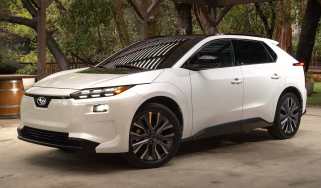
New Subaru Solterra brings more range, power and polish
Most Popular
Tips & advice

Car dashboard warning lights: what does each symbol mean?

Electric car charging stations: public networks, charger types, apps and maps


